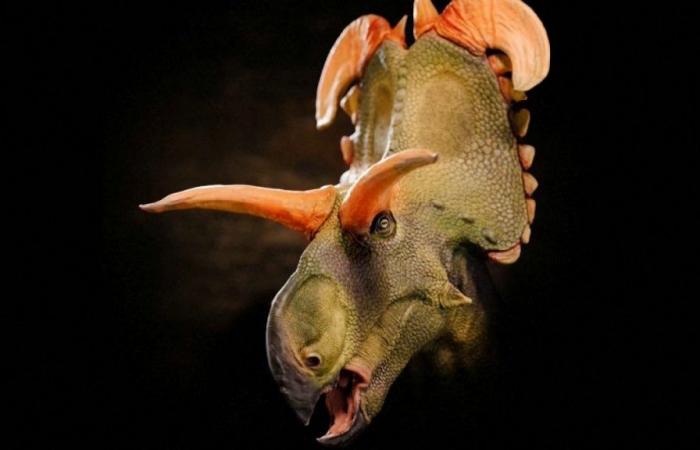The skull of a new species of horned herbivorous dinosaur, a distant ancestor of Triceratops, is now on display in Denmark.
An ancestor of Triceratops, Lokiceratops was a horned herbivorous dinosaur that lived 78 million years ago in what is now North America. The dinosaur’s skull was discovered in northern Montana, near the U.S. border with Canada, in 2019.
It is now on display at the Southern Denmark Museum of Evolution.
“We know that this is a new dinosaur, that it’s a horned dinosaur. And, as such, it’s extremely important because new dinosaurs are always important,” explains Christoffer Knuth, director of the museum.
Experts estimate that Lokiceratops was more than six meters long and weighed around 5 tons. Mark Loewen, a paleontologist at the University of Utah, named the new species Lokiceratops rangiformis because of its unusual, curved, blade-like horns – a nod to the helmet of the Norse god Loki. But also because of the asymmetrical horns atop its skull that are reminiscent of caribou antlers.
Experts say Loki was mined from the same rock layer as several other dinosaur species, suggesting that many different dinosaurs lived side by side 78 million years ago.
“We actually know that diversity in northern Montana, in the United States, was very, very high in the late Cretaceous.”explains Loewen. “We are starting to learn more about relationships within the ceratopsian family from this specimen.” “We now know that… similar dinosaurs could live together, without competing with each other, so this is quite new”adds the museum director.
Paleontologists have reconstructed Loki’s skull from countless fragments. After piecing everything together, they realized that Loki was a new species of dinosaur. The discovery was published in the scientific journal Peerj on Thursday June 20. “It was a huge job putting the little pieces together.”raconte Christoffer Knuth.
“It was kind of scattered, like you had a Chinese vase, a new vase, and you dropped it, and it was all over the floor.”
Lokiceratops is now on display at the Museum of Evolution, located within the grounds of Knuthenborg Safari Park in southern Denmark. The museum unveiled its latest addition on Thursday: an imposing 13-meter-long skeleton of Camarasaurus, a long-necked dinosaur similar to Diplodocus.
Discovered on a Wyoming cattle ranch in 2017, it lived during the Jurassic period, between 155 and 145 million years ago. “He was found in exactly the same position in which he died,” Knuth explains. “And most likely it died in a swampy area or in a slow-moving stream or river. It sank to the bottom, became covered with sediment, mud, and so no one ate it. And then 150 million years later, we found it again.”
But the dinosaur’s journey to Denmark wasn’t without its problems: unexpected delays due to customs complications in Zurich, Switzerland, delayed its arrival. The museum’s director said that at one point, no one knew exactly where its six boxes containing the precious fossils were. “The last 72 hours have been quite stressful,” he said. “We knew it wasn’t lost as such, but we didn’t know where it was. And that’s pretty stressful when you’re dealing with a gigantic dinosaur.”
Knuthenborg Safari Park is home to around 500 wild animals. Combined with the live animals outside, the museum tells an evolutionary story spanning 300 million years.






